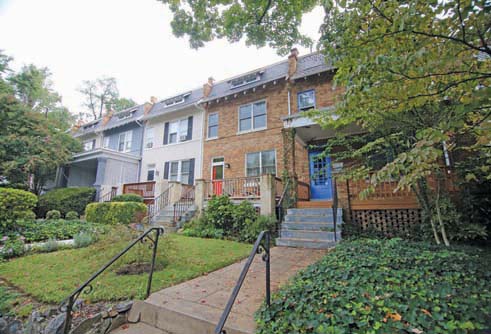Burleith Puts Off Landmark Request

By Brady HoltCurrent Staff Writer
The Burleith Citizens Association has put off consideration of applying for the neighborhood to become a historic district until the beginning of next year, according to president Eric Langenbacher.
The association began discussing the possibility of filing an application — which, if approved by the city, would control the demolition of homes and certain types of renovations in the community — earlier this year. Though the group had originally planned to discuss historic designation at multiple public meetings this fall and host a community vote in January, it announced last week that formal discussions will be on hold for at least a few months before the process resumes.
“This gives us more time to plan things correctly and involve more people,” Langenbacher said in an interview yesterday. “There are some folks that aren’t happy with the way things have gone so far. This gives us a chance to take everything under consideration.”
Association board members have gotten busy with other projects and want to make sure they have adequate time to conduct research into issues that concern the neighborhood, including the economic ramifications of historic designation, Langenbacher said.
“It’s more about information-gathering and listening to voices in the community before we make any kind of choices moving forward,” he said.
At its most recent meeting, the association invited state preservation officer David Maloney to discuss what restrictions would likely apply in Burleith.
“There are some things that would not be allowed if this were a historic district,” Maloney, who had recently participated in a walk-through of the neighborhood, said at the Sept. 14 meeting. “Most of them seemed OK, generally; many of them would have been approved clearly outright if the area were a historic district. Some of them, we would have tried to revise some of the aspects of the design.”
Burleith is a primarily residential area just north of Georgetown with blocks of 1920s row houses, some of which have been targeted for redevelopment into multifamily construction. City zoning rules include limits on height and density, but unlike in a historic district, projects aren’t subject to review of the planned architecture.
Maloney said the theoretical Burleith historic district would make it impossible to tear down a house in most cases, and would require an architectural review for additions and other alterations. However, unlike the federal protections found in Georgetown, the historic district for Burleith would wave through most applications as part of a simple building permit review without a full public hearing process.
A few projects, though, would likely be turned down, Maloney said; besides teardowns, major alterations to front facades of houses would likely be deemed incompatible with the historic district. That would include third-story additions that visibly stick out above the original facade, roof decks visible from the street and the removal of original porches.
But outside of those constraints, Maloney said, residents would still have free rein to change their homes. Notably, rear additions that don’t substantially alter the view from the street would likely be approved without fuss, despite some residents’ concerns about big modern structures visible in many neighborhood alleys. “On the back of the house, we don’t take any position on style,” Maloney said.
Several homeowners at the Sept. 14 meeting expressed concerns that a historic district would restrict key property rights and that reduced redevelopment potential would harm their property values. “In my view, the only way to make these family homes is to make bedrooms that are of a size that people want in 2016 — and the only way to accomplish that is to go up,” one woman said.
Lenore Rubino, a real estate agent and former president of the citizens association, said that in her own experience, historic districts appeal to buyers who appreciate that the house next door won’t be torn down or wildly altered. “They like to be able to know that this is what the community looks like,” she said.
If the association does ultimately support a Burleith historic district, the Historic Preservation Review Board would need to approve its application, based on the neighborhood’s historic merits and community support.
Staff writer Mark Lieberman contributed to this report.
This article appears in the Oct. 5 issue of The Georgetown Current newspaper.
